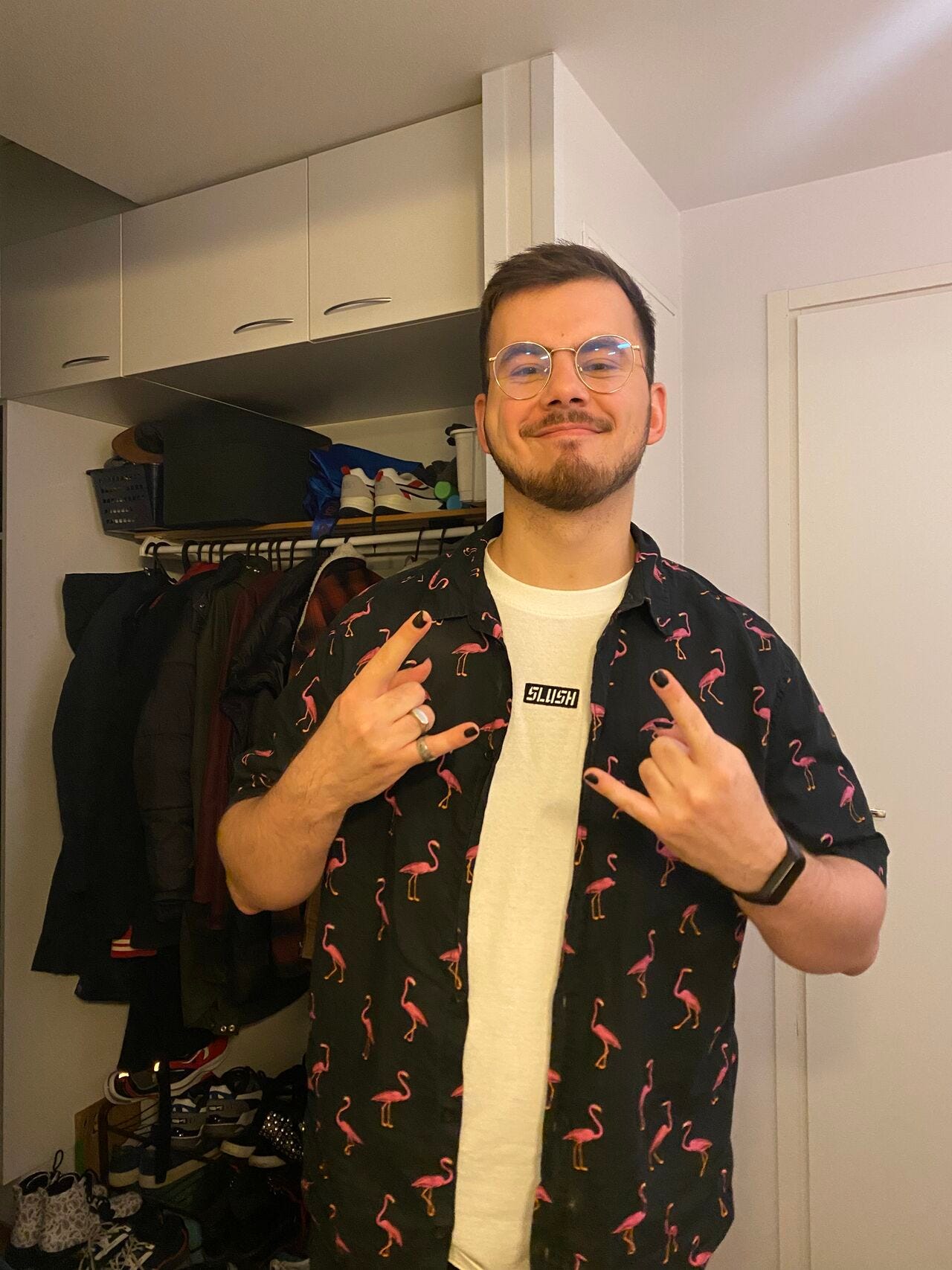Hey there fellow Apprentices,
We’re back with another co-authored discussion piece. This time Roman & I are delving into the world of personal branding as we seek to learn about the power of brand icons in creating unique identities online. With a moustache and a flamingo as callsigns of our own, we share how we chose these symbols and why they’re working for us.
Roman is casually known as “The Flamingo Guy” on LinkedIn where he talks about personal branding and helps young marketers build their brands through either his content, newsletter, or coaching. All the while having a full-time job as a growth marketer (he has no idea how he’s doing this). If you’re a keen marketer ready to flap your pink wings onto LinkedIn, Roman is the guy for you. Either drop him a follow on LinkedIn or sign-up to his newsletter.
But, for now let’s explore everything about standing out online and how brand icons can help you do exactly that.
Introduction
Personal brands are everywhere.
Just one scroll of your LinkedIn feed or your Tiktok For You page and you’ll realise that most creators are people-first, not brand-first. They use their likeness to share content relating to who they are, connecting quicker with their audience than any Canva-inspired company logo ever could.
But, amongst a sea of similar faces, the creator must find a way to stand out from the crowd and be memorable to their audience.

One great way of achieving this is by building positive associations with quirks, colours and emojies that are repeated time and again in the content they create. Better known as brand icons, they require enough repetition that risks sounding like a broken record.
But, with enough consistency the creator becomes “The ___ guy” to everyone who ever struggles to remember them.
What Makes a Great Brand Icon?
A brand icon is an image you’re known for.
It can anything from the emoji you always use to the food you claim to love to colour palette that is painted across every image you share.
Here are just a few examples from the LinkedInsphere:
Each icon enables the creator to stand out. Not because the icon is inherently “good” or “bad”, but simply because the creator has given a memorable yet neutral image a positive association to themselves.
To achieve this memorability it’s important that the icon is…
Easy to replicate - can be drawn, duplicated and explained easily.
Known neutrally - has no previous negative connotations.
Consistently used - repetition, repetition, repetition.
So, with all this in mind how did we come up with our own?
Let’s tell you a story or two…
Roman’s Experience
Over a year ago, Roman made a post and used a photo of himself where he wore a flamingo shirt. People noticed it, loved it, and something clicked in his brain: “Nobody else has flamingos”. He saw people using rockets 🚀 and fire 🔥 but those don’t stand out.
At the same time, he knew Chloe Fox was always talking about her funky socks and watermelons, while Lea Turner’s entire visual brand identity was around rainbow and rainbow colours.
And so he gave it ago.
He started using the flamingo🦩 emoji in every comment he left.
Then added it to his name. Then to his banner. Then shared the photos of him wearing the same flamingo shirt more.
Then people demanded an explanation on what’s the reason behind the flamingos. So he made the post about it.
And now he’s known as “The Flamingo Guy”.
Charlie’s Experience
In the Summer Charlie went for one of his regular shaves to tidy up the beard that he’d worn since Movember in his 1st year of university. He did the usual trim and shave. But, then he noticed he’d accidentally caught his jaw line.
Rather than leaving a slightly off-centre beard, he decided to go all-in for a clean shaven look. He knew it’d grow back in a few days anyway.
But, along the way he started experimenting… Trialling no sideburns, a goatee and eventually, to his girlfriend’s surprise, a moustache.
One thing led to another and he uploaded a photo onto LinkedIn. Next thing he knew, he was getting called “Iron Tache” in the comments. And by that point there was no going back.
Now when someone half knows him from LinkedIn on a night out, they’ll say “ahh you’re the tache guy who’s always on my feed” before anything else.
Well you know what they say? Any publicity is good publicity.
How to Build Your Icon
Okay, so both of us fell into our icons. We didn’t meticulously plan out which ones would work best. It was more a spontaneous opportunity that arose from which we both listened to the feedback and decided to double down.
However, we believe you don’t have to leave it so much to chance. So, we’ve come up with 4 steps to building your own icon.
Review what’s already working
Reflect on conversations with friends and family. Do they have a word or two they already use to describe you? Are you already known as the go-to person for something? Or maybe you’re already using a brand icon without even realising it? Listen to their feedback. If you’re already posting online, check the comment section. Look for trends. Then use them as your starting point.
Share a quirk you have
The best brand icons can’t be replaced. They’re unique because they wouldn’t make sense with any other creator. So, explore your hobbies and interests. Is there any nerdy interest or niche sport you love that you’re a little afraid of talking about? If so, you’re probably onto something. Craft up a post, hit share and see what the response is. You’ll quickly learn if it’s memorable or not.
Build a positive association
Once you’ve found an icon that works double down on associating it to positive experiences. Make it fun and exciting. Explore turning the icon into a game or inside joke. The more your audience feels they can connect to you, the individual, through your icon, the stronger it will be. And if your name is Roman, you’ve already taken this one step further and even adopted a flamingo plushy voted by his audience to be called ‘Pinky’.
Repeat until it becomes normal
At first the whole icon thing is gonna feel weird. You’ll wonder if you’re being judged for repeatedly sharing the same thing. In the short term, that’s probably pretty accurate. You’ll get a few strange comments or looks. But, persevere through the social anxiety and before long your icon and you will be inseparable. You’ll know it’s happened when your community can’t stop with the jokes or pet names. And if they create a meme or two for you take it for the compliment that it is. Not many reach meme status.
Conclusion
As authenticity continues to take social media by storm, consumers are increasingly seeking connection to brands that can truly relate to them. And there’s no better placed brand than a personal one to bridge the gap between creator and community, sparking relatability and trust along the way. But, as the sea of part-time content creators compounds, they each need a memorable way to stand out online. Or else they risk becoming irrelevant.
It’s in this wave of opportunity that we recognise the importance of brand icons in associating you with your audience.
What’s your favourite brand icons you’ve seen used by a creator? And how does it make you feel when you remember it?









Dakota Robertson did something similar with pineapple pizza. Simple, but works!